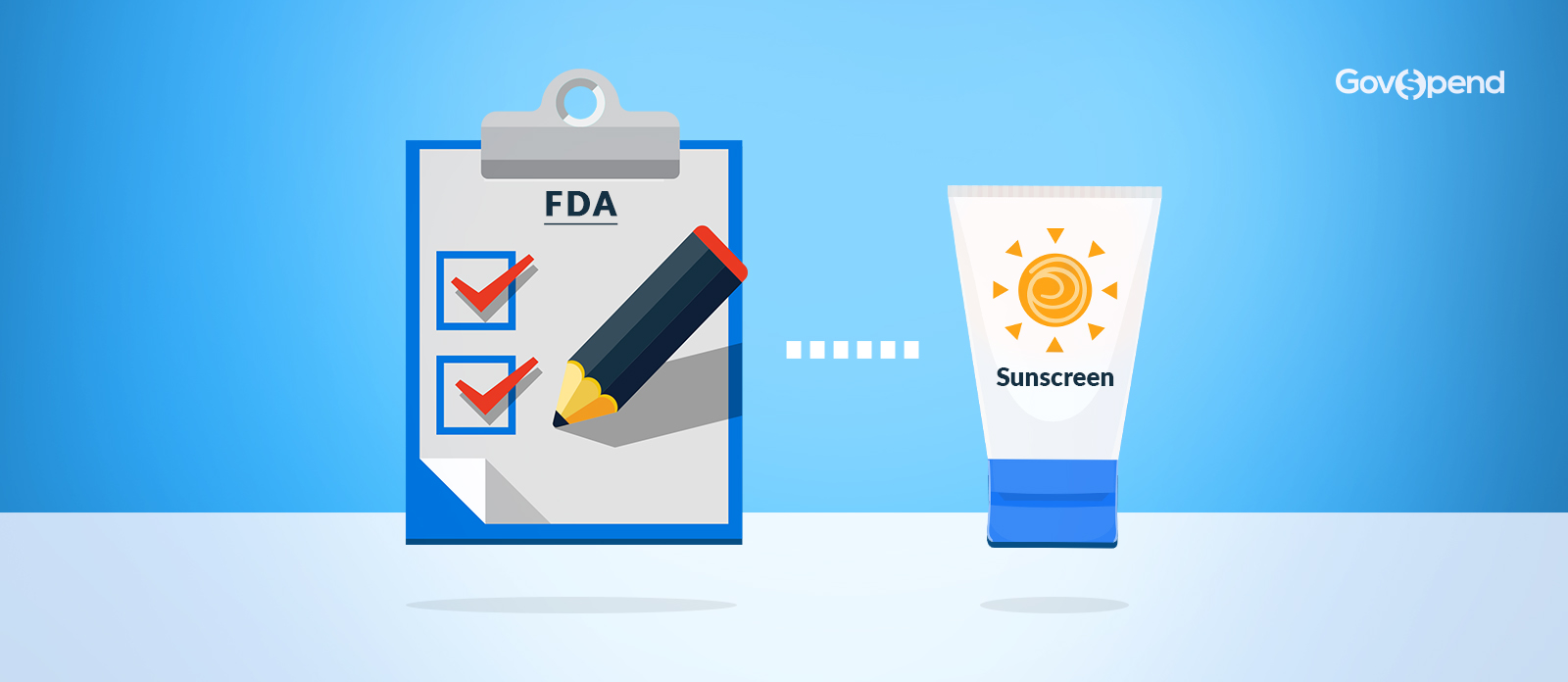
According to GovSpend’s database of historical purchase data, the government has spent over 900,000 dollars on sunscreen products in 2018. Initially, sunscreen was only used by citizens when on vacation or spending significant amounts of time in direct sunlight. However, that has changed in recent years.
An Increase in Sunscreen Use
According to the Skin Cancer Foundation, more Americans are diagnosed with skin cancer each year than all other cancers combined. And according to the World Cancer Research Fund, melanoma ranks as the 19th most common cancer in both men and women.
This has led to an increase in the usage of sunscreen as over-the-counter prevention for sunburns. Once the use of sunscreen rose to every day, combined with applying it to large portions of the body as recommended by dermatologists, the FDA began to expect more comprehensive research from the industry.
After all, anything put on the skin will be absorbed into the body and into the bloodstream. So an FDA study randomly assigned 24 healthy volunteers a different type of sunscreen that contained the chemicals avobenzone, oxybenzone, octocrylene, or ecamsule, as ingredients. They were instructed to put their assigned sunscreen onto 75% of their bodies four times daily for four days. Then blood was taken from each volunteer for seven days.
The First Sunscreen Studies
This is a very small initial study, that will need to be expanded upon with further tests and examinations. However, it demonstrates the government’s growing interest in these chemicals that it is spending the taxpayers’ money on. This has also become more apparent since the state of Hawaii and The Key West area in Florida recently implemented bans on sunscreens that contain the chemicals oxybenzone and octinoxate after it was recently revealed that they cause coral bleaching.
However, this has not stopped the government from purchasing sunscreen to protect its citizens or from encouraging people to protect themselves with sunscreen. There isn’t enough data yet to determine the true effects of these chemicals in the bloodstream.
Some groups have recommended using mineral sunscreens containing titanium dioxide and zinc oxide if possible.
For manufacturers or sellers of this particular type of sun protection, this may be an opportunity to target sales towards the government who are beginning to question chemical sunscreens. Using a database of historical purchase data, such as GovSpend’s, can give these sellers access to which agencies have purchased sun protection in the past and how recently they purchased. Targeting agencies that may already be considering a product change can give a business advantage to win more deals.



